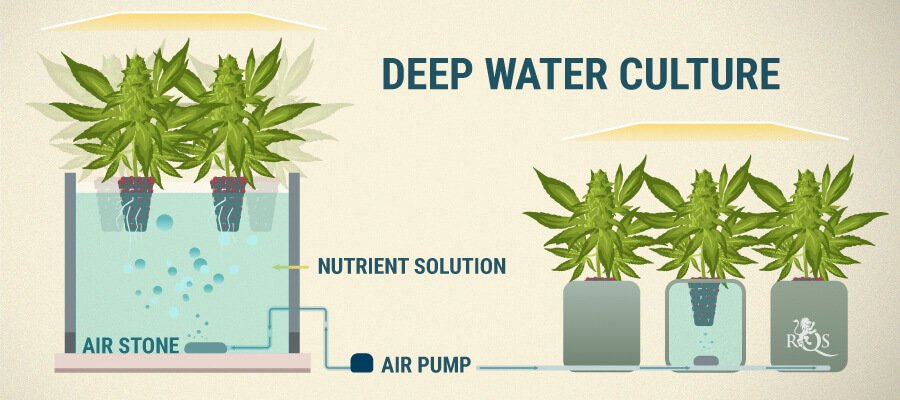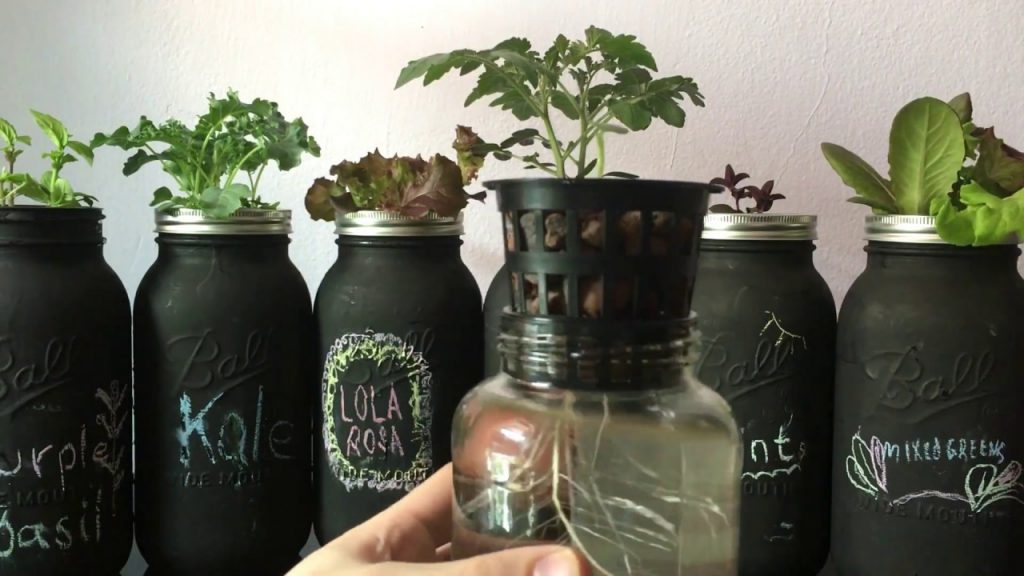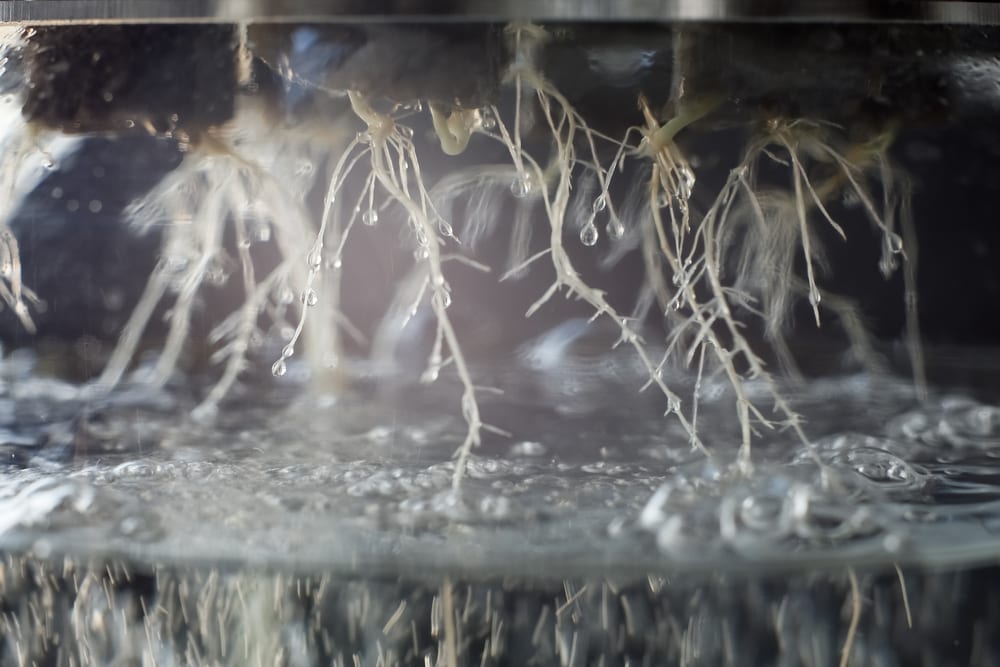Plants are an essential part of our life cycle. Farming is a trend that is coming back as more young people are entering now a days into the farming field. As the technology has also developed to a great extend in this modern age, it has changed the face of farming.
The requirement of land or soil for farming was always an issue in this developing economy. As we are resourceful being able to adapt to the changing world around us he developed ways to grow plants without soil or land. He found that the plants can be grown very well if we provide them with a good source of nutrient, which can be supplied by means of water. Thus the technology of growing plants in water is quickly catching on with all the urban farmers. This technology is known as hydroponics.
There are many types of hydroponic systems, six types all together depending on the different ways they are grown. Among this the deep water culture hydroponic system or Dwc Hydroponics for short is the most direct form of hydroponic system.
In this article we will see about the DWC hydroponic system- How does it work, set up for seep water culture, different types of deep water culture hydroponic system and it’s benefits.
What is a dwc Hydroponics System?
Deep water culture hydroponics or raft system is the method of growing plants by completely submerging the roots in nutrient solution. Deep water culture is a different form of water culture in hydroponics.
It’s called raft system as the plant float on top of water in a raft like system. In deep water system the water depth should about 8 to 10 inches deep. In most cases the water depth doesn’t need to be about 8 inches deep for example in case of plants like lettuce the roots will grow easily in small containers with 4 inches water depth.
For larger plants the depth need to be 8 inches as their root needs more space to grow. So the depth of the nutrient content depends on the plant size you are using.

Plants to grow in DWC
Most of the plants can be grown in DWC like the vegetable and herbs. It is not advised to grow flowering plants in DWC. Some common plants grown in DWC are basil, bok choy, chard, kale, broccoli, cabbage, lettuce, tomatoes, squash, and peppers.
The plants would grow very fast and healthy as the roots are directly in contact with nutrient solution. As the roots are directly in nutrient the roots don’t have to develop much to take up the nutrients compared to that in soil. Thus the yield is also better in deep water culture.
Factors for crop selection
There are many factors that need to be taken into consideration while selecting plants that are to be grown in the raft system.
- Weight of plant: – as the plants are grown in a floating raft the weight of the plant is an important component to be taken into account. If we are keeping the plants on a raft on top of nutrient solution then it is best to select plants which weigh less like lettuce, broccoli, and kale. If you are planting heavy plants like tomatoes or squash it is not advisable to use a raft instead a more sturdy cover need to be installed on top of the nutrient solution.
- Volume: – if the space of your DWC is less then it is better to opt for plants that grow denser. As it will fit the size of your DWC container.
- Water loving: – it is better to plant water loving plants in DWC as their feet would be always wet. Plants that thrive in dry condition don’t do well in DWC.
- Harvest: – if you are aiming for profit from the growth of plants in DWC then it is better to opt for plants that provide a return. For example in this case you can opt for plants like tomatoes, lettuce etc.
- Hybrids: – hybrids are versatile and durable in all conditions, so it is better to opt for hybrid plants than for heirloom plants. The yield production will also be better from hybrid plants and they are less susceptible to diseases.
Homemade DWC system
It is relatively easy to set up a DWC system in your home. The materials you require can be easily acquired from a garden shop and it’s within your budget rate. The materials you require are a bucket, Styrofoam or bucket lid, net pot of desired size, air stone, air pump, air tube and growing media of your choice like clay pellets, rock wool etc. the steps to set up a DWC are as given
- Fill the bucket with the nutrient solution. The level should be so that the roots just dangle in the solution or at a level above the base of the pot but not submerged.
- Make hole in the bucket lid or Styrofoam so that the net pot fits comfortable
- Connect the air pump to the air stone using the air tubes and place it in the reservoir bucket
- Place the plant with the roots propping out in the net pot in a growing medium of your choice
- Now assemble the whole set up together and turn on the air pump
When the plant mature the roots will grow out of the net pots (net pots are used as the roots can grow out from all sides) the level of the nutrient solution can be reduced but as the young plants are planted the level need to be higher and in easier range of the plants.
The air pump provide well oxygenated nutrient to the plant roots. Oxygen helps the plants to grow faster.
It is important to change the nutrient solution regularly as the nutrient strength reduces with the growth of the plants.
Different deep water cultures
The different types of deep water cultures are as follows

- Traditional methods – This is the most basic system in deep water culture. The material required are bucket, net pot, air stone, air pump and a growing media of your choice. The water level should be high when the plant is small as the nutrient should reach the roots. As the plant matures the roots will grow out through the net pot and take up the nutrient. The nutrient level needs to be monitored and replenished regularly as the nutrients are used up.
- The kratky method – This is the same as other deep water culture only exception is that this doesn’t require pump. So there is no electricity requirement or any other equipment. In this method there is an air gap between the plant and the nutrient solution. So part of the root is submerged in the water and some are not. Thus it takes up the nutrient and oxygen it requires. The air pump do offer higher oxygen rate than this method. It also help to keep the water disturbed so that there is movement of the nutrients and the minerals don’t settle to the bottom.
- Bubbleponics – This is similar to the regular DWC with all the same equipments the only difference is the addition of a water pump. The water pump helps to feed the nutrients to the top of the net pot. This is especially useful in case of small plant as the roots are still not developed enough to reach the nutrient solution to take up the required food. The nutrient supplied on top is drained back into the reservoir via the net pot thus making it a recirculating system
- Recirculating DWC – If the traditional DWC system need to implement in large scale it can be a tough job as we need to check each bucket for optimum pH and nutrients at a regular basis which can get tedious. So in order to use DWC in large scale the recirculating DWC or RDWC was adopted. Here all the buckets are interconnected via PVS pipes so that the water keeps circulating through all the buckets and we only need to check the Ph and nutrient levels at one point.
Ways to oxygenate DWC
Two methods are mostly used to oxygenate the nutrient solution in the reservoir, they are
- Air stone – using air stone is an excellent means provide more oxygen to the nutrient solution. The air stone are connected to the air pumps which supply the air and the submerged air stone creates more bubbles thus keeping the nutrient water oxygenated.
- Falling water – this is a good method to keep the nutrient aerated. In this method water falls from a height and this agitate the water in the reservoir thus increasing the oxygen level in the water. The higher the water fall the more aerated the water would be.
Advantages and disadvantages of DWC
There are both advantages and disadvantages of using DWC. First we will see some of the advantages of DWC
PROS
- DWC require low maintenance as it uses very little equipments.
- DWC has no pipes or emitters to be cleaned due to water clog.
- The plant growth is accelerated as the plant receives the nutrients directly to the roots. For example lettuce grown in soil requires 60 days to mature and harvest while that in nutrient solution it require only 30 days.
- Not much fertilizers are required as they are dissolved in the water
- Oxygenating the nutrient solution with air pump help to increase the absorption rate of nutrients
CONS
- In the traditional or small scale DWC systems the pH level and nutrient levels can vary.
- In case of small scale DWC we need to physically monitor the nutrient level and pH levels.
- In case of power failure or pump failure the plant can start to suffer due to non oxygenated nutrient solution.
- In case of non circulating nutrient solution it is difficult to maintain the temperature constant as the submersible pump can heat up the water.
- There is a need to constantly service the equipment to prevent its failure as equipment failure can affect the plants
Conclusion
DWC is the most cheap and efficient way for any beginner to enter into the field of hydroponics. It is easy to set up and maintain in small scale. It helps to grow plants faster as they are directly in contact with the nutrient solution.
There are both pros and cons in the DWC system but the pros outweigh the cons. For those interested in farming in the urban areas DWC provide an interesting platform. The cost of setting up DWC is also low as most of the materials are readily available and cheap to procure.
By keeping in mind a few factors like oxygenation, pH level and nutrient level we can create a farm which provides us with a high yield and that to in a short amount of time.


this was really helpful thx